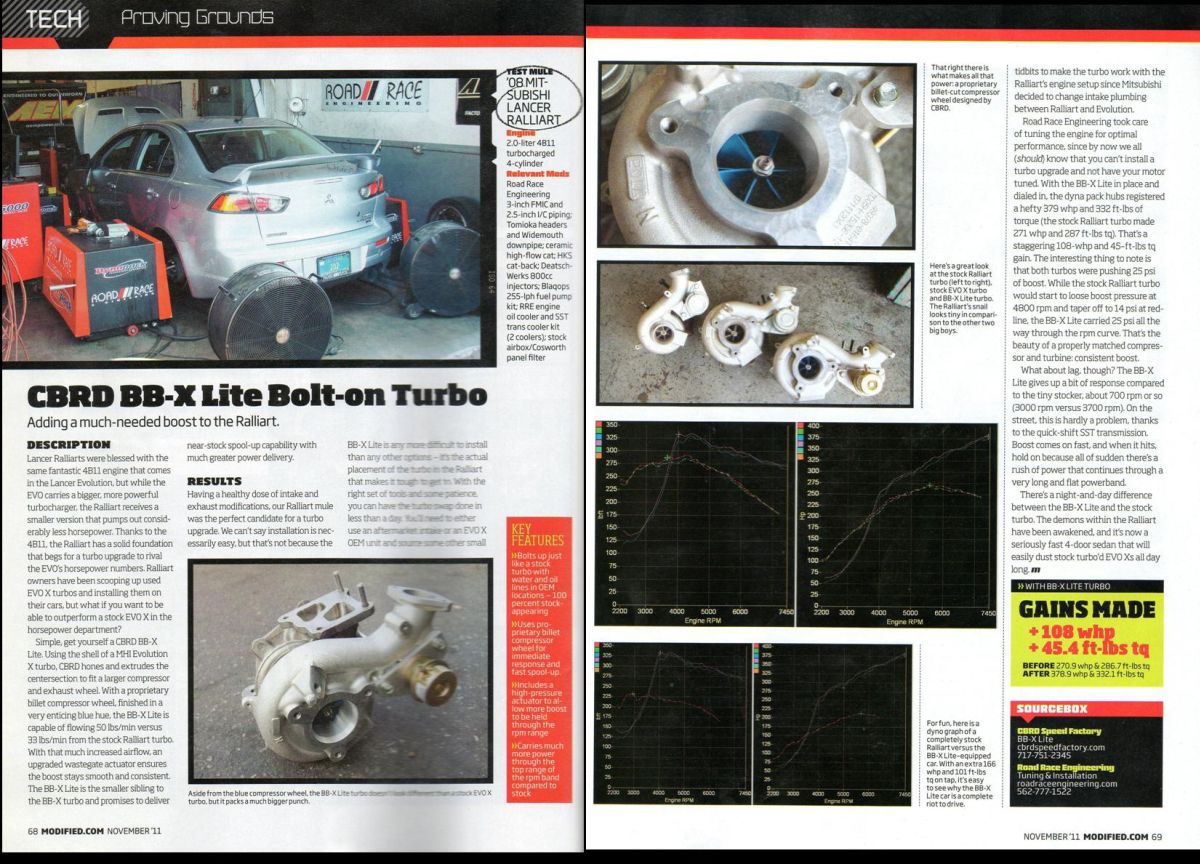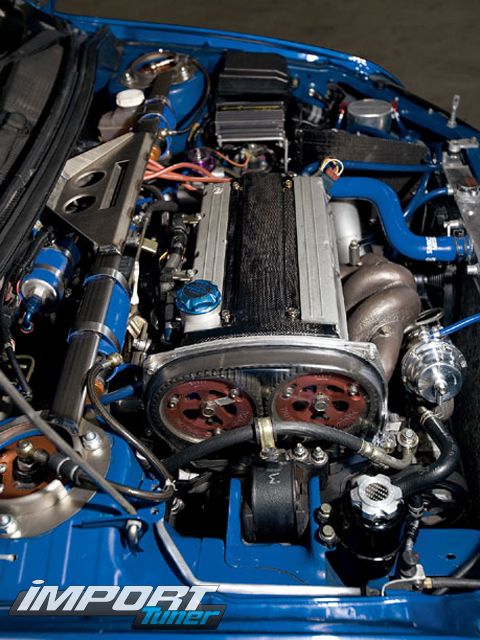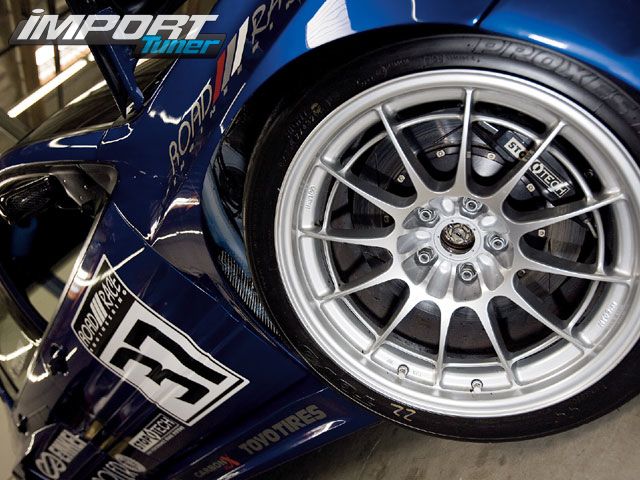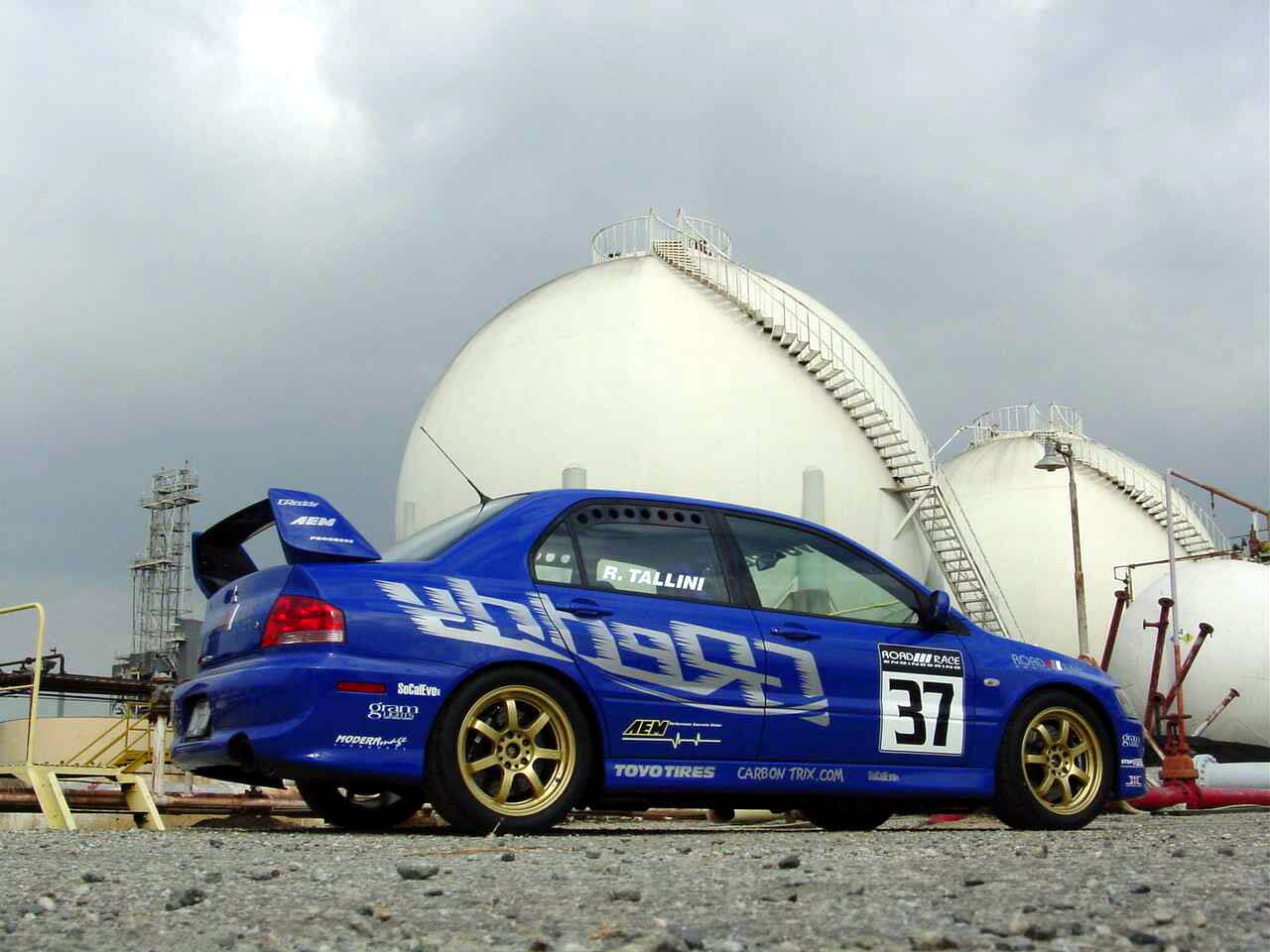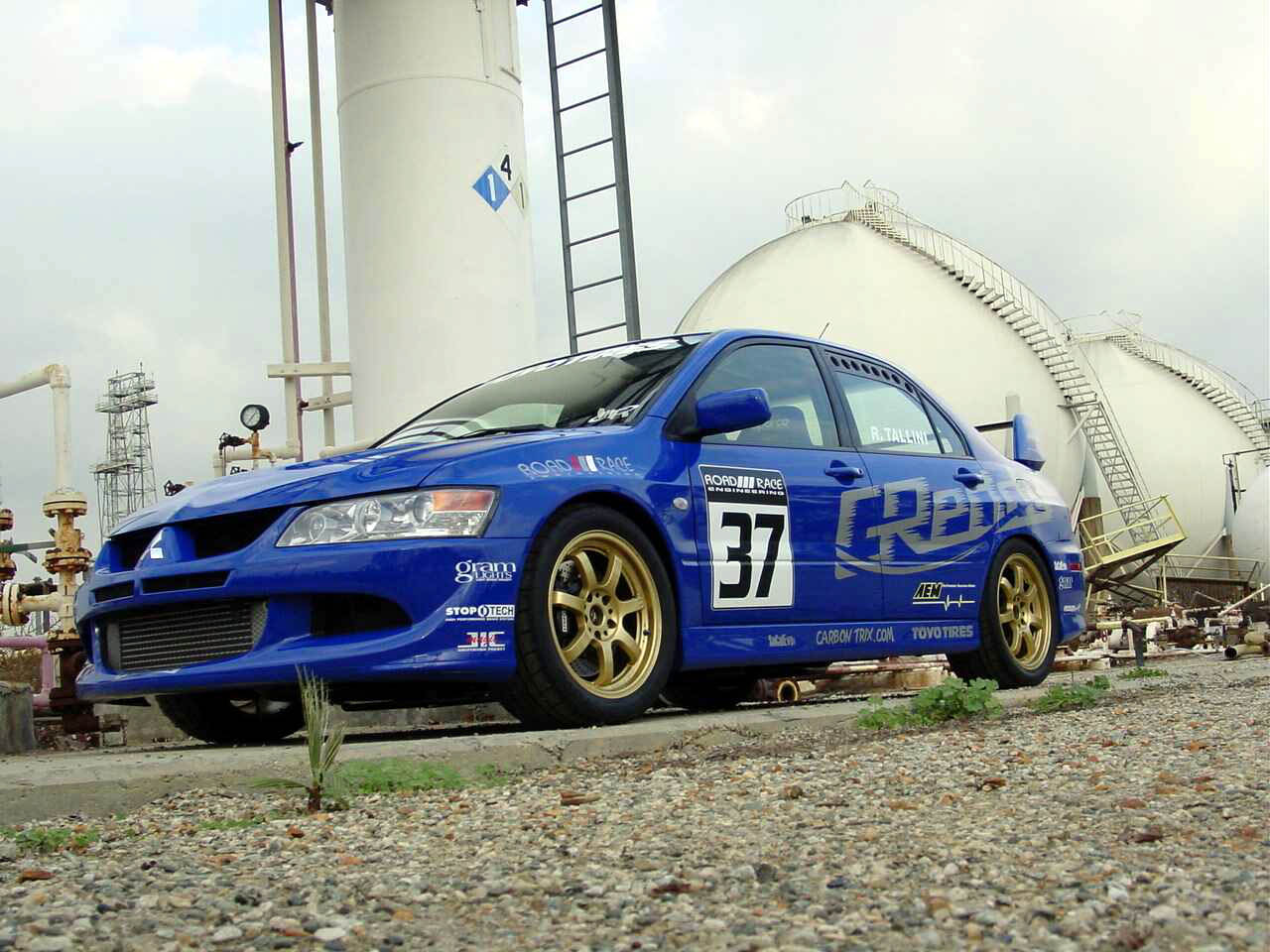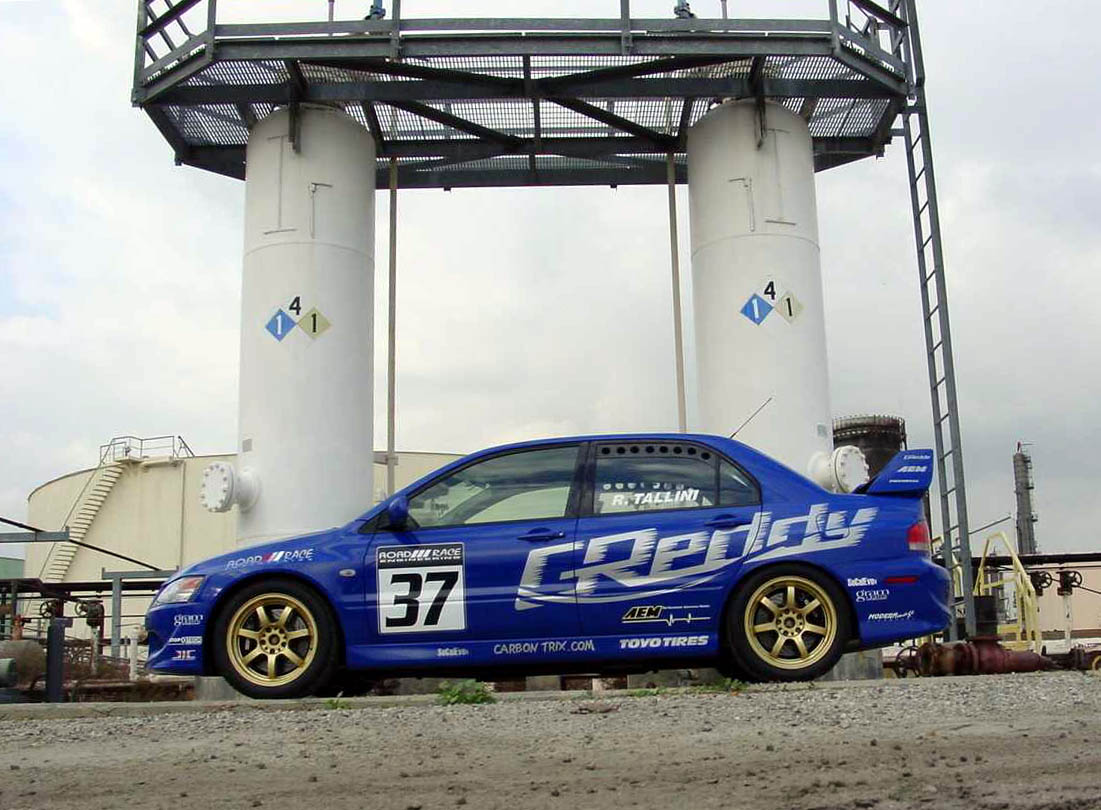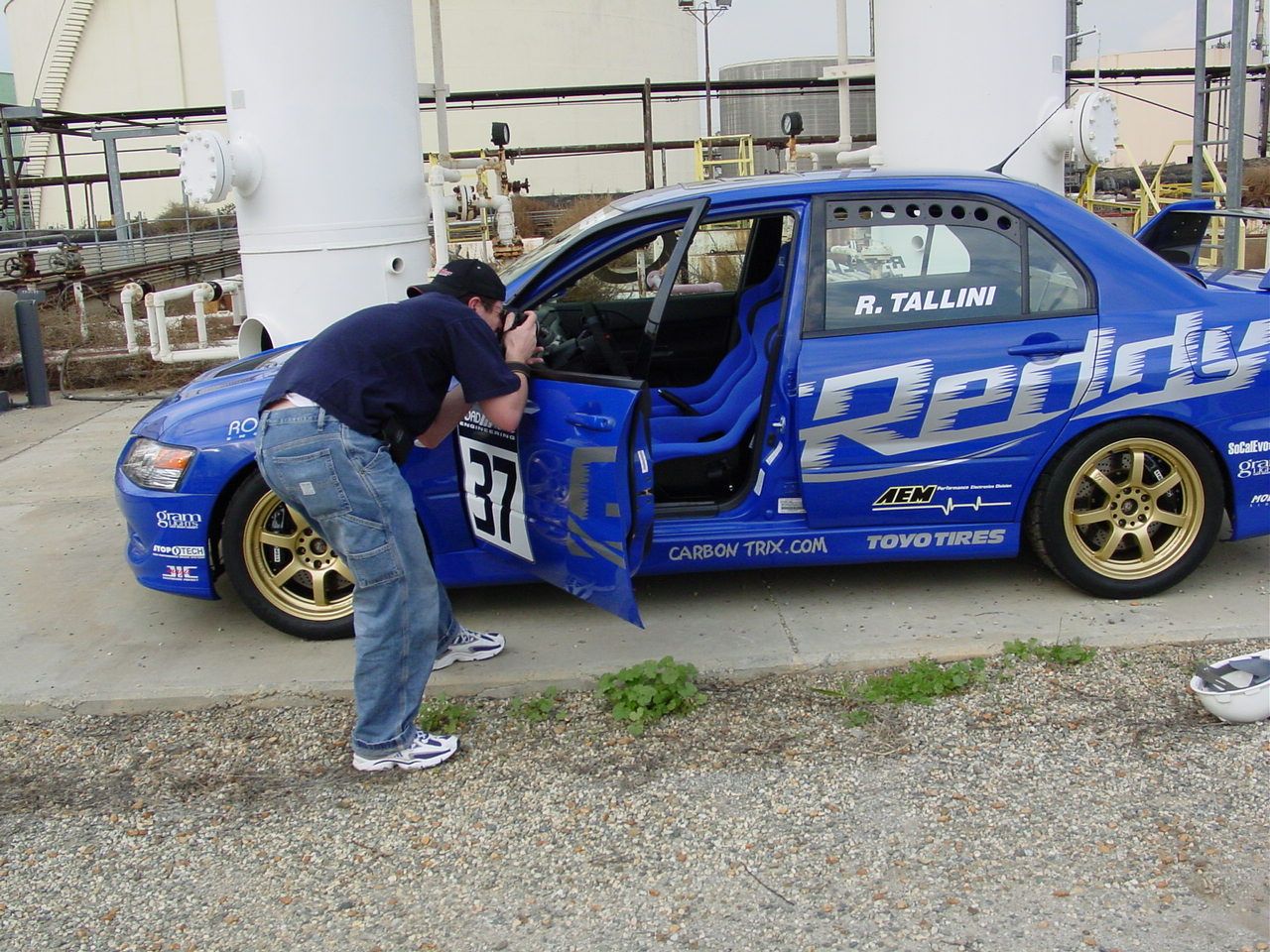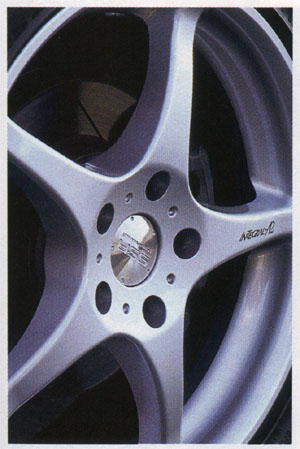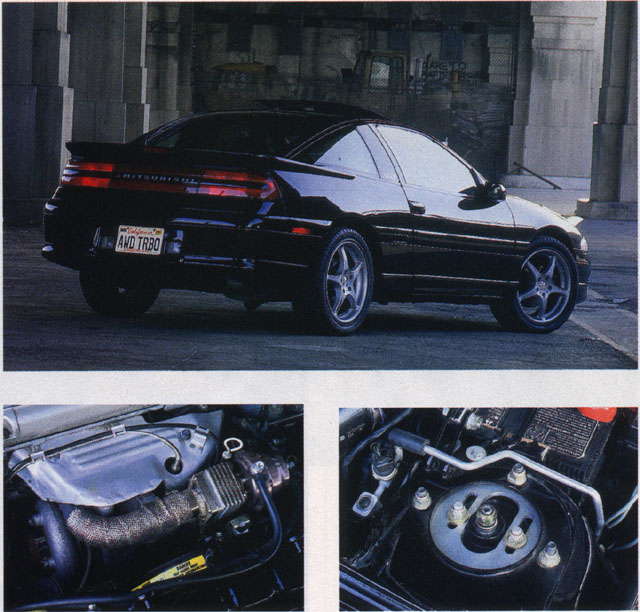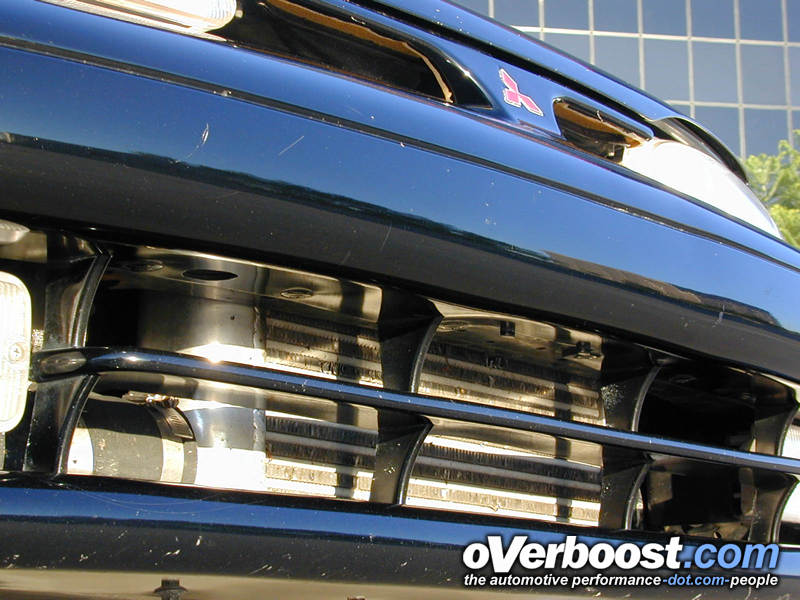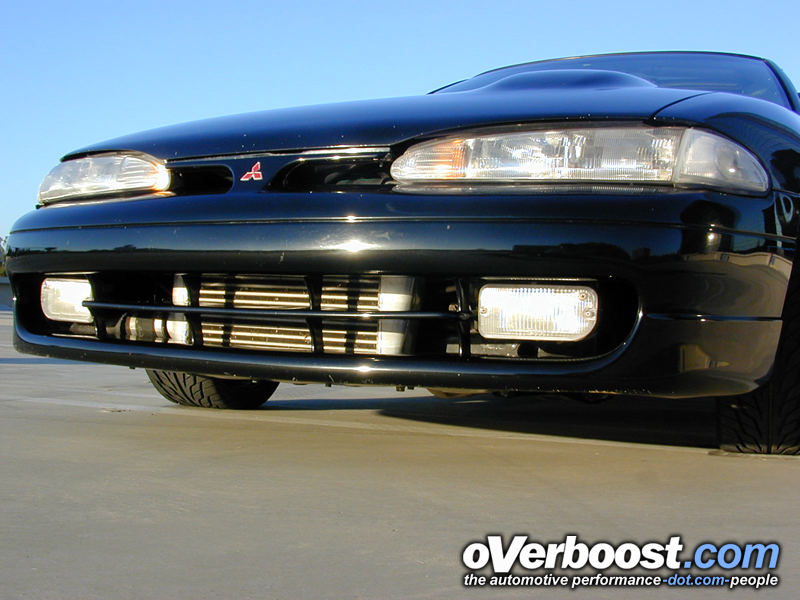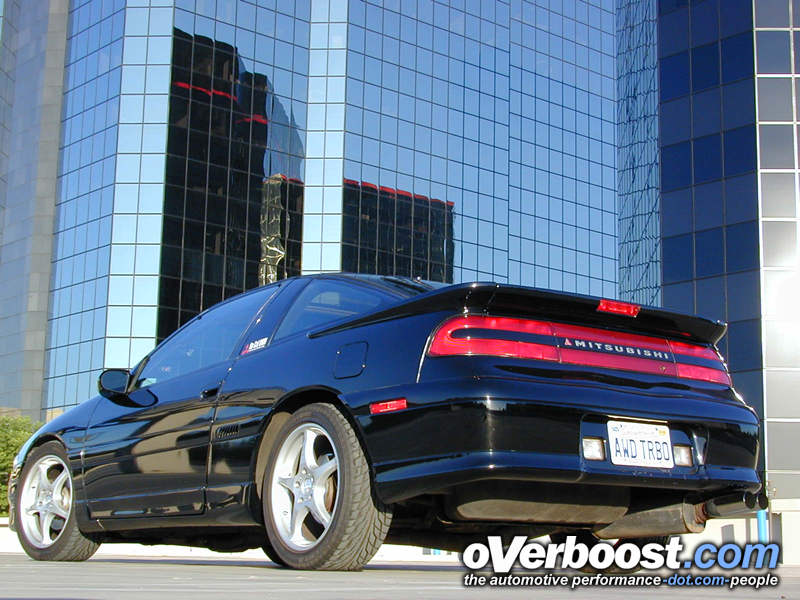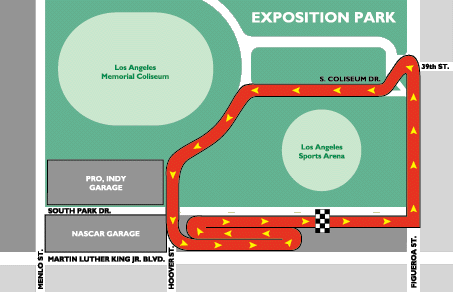Royz Pikes Peak EVO 8 – Hoonigan Build Biology
The Hoonigans just did a Build Biology video feature on Roy Narvaez’s EVO 8 that we built for him back in 2015 for Pikes Peak.
We built the car for Roy out of James Singer’s old street car that got rear ended by a girl in a Jeep putting on her makeup in the morning commute. Even though the damage in the rear was just the rear body panels and rear part of the floor, the car was declared a total loss by an idiot insurance adjuster that didn’t know the difference between a Lancer and an EVO. Roy bought the shell and RRE took it from there.
Roy raced the car in 2015 but that year the course got shortened due to weather. He came back in 2016 for some satisfaction to complete the full course. But that year the mountain got him instead. He was driving in practice up in the W’s section and the straight road just moved and made a curve out of nowhere. You can see it in the crash video. You can watch the in car video and the road moving out of no where just stuns poor Roy and side of the road just wrecks into the car. Weirdest thing to watch it is. He was done for that year’s attempt.
Back in LA Roy took it to a body shop to fix but they tole him the car was wrecked so it was unrepairable. Yes, the body shop said because the car was crashed they couldn’t fix it. The frame was bent. Silly us we thought that was what body shops did, fix crashed cars. The car had too much work in it to throw it away. So Mike got out his big hammer and with some 1950’s frame pulling technology he straightened the core shell and floor and replaced the frame rail and radiator support. Some new APR bod panels and suspension and it was ready to race again for the 2017 Pikes Peak Hill Climb.
Check out the video for a closeup look at the car and some stories from Robert Garcia about the build.
RRE @ Hot Import Nights – Pomona Fairplex
Road Race Engineering teamed up with Mr Ticket and went to Hot Import Nights at Pomona Fairplex recently. This was the first HIN event of the year and we brought the RRE 4G Eclipse GT as well as Tim Smith’s EVO X GSR which won second place in the four door class competition. Tim’s GSR was recently featured in DSport Magazine. RRE model Natalia Marie was with us to keep the peace and deal out a little street justice where necessary.
MORE PICS: (more…)
RRE @ Hot Import Nights LA – December 3, 2011
Rossy took the RRE race cars to the LA Convention center for a night out this last weekend. The shop EVO 8 and 4G Eclipse got a lot of attention as always :-)
Modified Magazine – November 2011 – RRE RalliArt
The November issue of Modified Magazine just hit the news stands. It is a skinny little magazine this month but well worth checking out. Some sweet old school cars and my favorite, an article on our project RRE Ralliart and the BBX Lite turbo install from CBRD! You also get a little article on the 2011 Mitsubishi Owner’s Day with a little pic of the RRE Battle Bot.
The car is currently tuned at 411 whp on our AWD Dynapack dyno and runs 375 whp on GReddy’s Mustang Dyno. It ran 12.2 @109 mph in the 1.4 mile at that hp. A bit more on this car is also in the October DSport. The full Modified Mag article is here.
It’s Alive!
Our Shop EVO 8 is running again after a time out for bad behavior. Fresh 2.3 stroker motor ready to make some noise. Monday we have some housekeeping under the hood. Then some break in miles on the dyno and a retune during the week next week.
New Motor Time
At the last Redlint Time Attack we finally killed one of the first 2.4 EVO motors in the US. This was the third 2.4 EVO motor we built back in 2004 for our shop EVO 8. I dont like the smaller available sealing surface available on a 2.4 block that has been bored .020″ oversized, the head gasket (along with the assistance of 520 ft lbs of torque) is what finally let go on the motor.
So we reused the Mitsubishi 2.4 crank and took the opportunity of it being all apart to switch back to a 2.0 block for a 2.3 stroker motor. Wiseco pistons, Manley rods, new bearings and a general freshen up. We’ll be hanging the motor in the car this week.
Gymkhana Grid
Went to check out the new Gymkhana Grid event at Irwindale this weekend. It is run as an invitational event by Ken Block. It is a crazy course in the infield at Irwindale. Two mirrored courses where the drivers demonstrate their skills at donuts, big slides and general mayhem.
Joon ran his MotoIQ S13 Nissan on the track and even brought his Corolla out for the burnout contest. Nobu “Monster” Tajima of Pikes Peak fame was there to scout the action. At the end of the night it was Tanner Faust’s night. I hope this takes off. It was a night of super entertainment.
Kerryann De La Cruz Interviews Rob Tallini Interview OwleTV
SHAKEDOWN!! Rob Tallini driving the RRE 4G GT Eclipse in the RTA at Auto Club Speedway
July 20th, 2008- Road Race Engineering/Motorsports finished 3rd in the FWD Class at Redline Time Attack, Auto Club Speedway–Fontucky, CA. This was the debut of the Road Race Mitsubishi Eclipse Time Attack Car.
[This is a picture of Tallini driving really fast. Notice the blurriness of the background.]
RRE EVO – Import Tuner Magazine
Nine Lives – 2003 Mitsubishi Lancer Evolution VIII
Not all Lancer Evolution VIIIs made it into public driveways. Some were destined for other fates, the most common of which being something we journalists know intimately as “press car” status. In most cases, press cars are destined to be crushed after their short test phase, because they are released before seeing approval from the Department of Transportation and the EPA. It sounds like a sad story, but really you’d be hard pressed to find a rental car as abused as most press cars are.
Think about it. These things are driven by hundreds of different people for one week at a time, with no concern whatsoever for break-in miles, warm-up time or anything else of the kind. If you think the Evo on these pages has ever slowed for a speed bump or been rubbed with a diaper, you are sorely mistaken. Press cars age in dog years. A press car with 20,000 miles on it is already gone. That’s not to mention that this particular press car started life in rainy mainland Malaysia and went on to a career in racing before evolving into the wide-body race car you see before you.
So you’re looking at an anomaly-the press car that just won’t die. Not because it hasn’t wanted to a few times in its life, but because it’s had too many Dr. Frankenstein owners force it back to life when all it wanted to do was call its long career in. In the hands if its current owners, Road Race Engineering (RRE) in Santa Fe Springs, Calif., it won’t be facing its demise in the jaws of a metal junkyard monster any time soon. According to RRE’s Mike Welch, “We don’t get rid of cars, we race them until they reach the end of their life cycle, then we own them some more.”
This Evo VIII started life at RRE as a race car back in 2003. This isn’t your typical story of a car that started small and moved on to the big modifications. The car had barely been in the RRE garage for a week before stock parts were torn off. The stock turbo was ditched in favor of a GReddy turbo kit and front-mount intercooler, while the factory suspension was tossed and replaced by a system from JIC. A four-wheel big brake kit from Stoptech with four pistons on each caliper and 355mm rotors all around got the party started right. Finally, a custom sheetmetal intake manifold from Magnus helped to increase airflow into the engine.
But as the American Evo aftermarket developed, Road Race Engineering was afforded a larger list of specialized components from which to choose. In addition, RRE developed many custom parts itself, like a cast turbo manifold-less prone to breakage than a tubular unit. The GReddy wastegate was exchanged in favor of an external unit from TiAL, while the GReddy Type-S blow-off valve was left to vent into the atmosphere. Intercooler piping leading to the GReddy core was replaced with a custom set from RRE. While Road Race was fabricating, it belted out a custom downpipe to guide hot air out of the turbocharger and into a Magnaflow exhaust. Being as inventive as the guys at RRE are, a Subaru up-pipe was used on the other side of the turbocharger and a custom intake was quickly fabbed up.
The turbocharger would be blowing boost into a 2.4-liter engine, machined out by Millenium Motorsports in Temecula, Calif. Before the new block was bolted to a Cosworth head, forged Wiseco 9:1 pistons were installed on top of forged Eagle H-Beam rods to keep the bottom end from turning into a boiler room for hot metal projectiles. The rods were then fastened around a balanced and counter-weighted crankshaft using ARP rod bolts.
The aforementioned Cosworth head seems to be the hands-down choice for all who race Evos. Maybe that’s because the only work teams have to do is unwrap the cellophane, bolt it on and race. It comes with a 272-degree camshaft for both the intake and exhaust sides of the valvetrain, stainless steel polished and oversized valves and polished combustion chambers. The valves stay seated with proprietary valve springs and retainers. Finally, a pair of cam gears from AEM was added to regulate valve timing events. Cosworth also clearanced the stock oil pan and a Setrab oil cooler was installed to keep temperature down during long race days in the California desert.
To keep the race car reliably fueled, RRE turned not to the aftermarket but to a car that has been on race tracks since the ’60s in some form or another, the Porsche 911. In this case, the Evo employs a Bosch external pump from the vaunted 930 Turbo in conjunction with a Denso internal pump, which in tandem provide fuel to a set of RC Engineering 1000cc/min injectors.
Since this Evo was built before the days of the American Evo RS, it was absent a limited-slip differential up front. RRE remedied the loss by installing a locking LSD from Quaife. To ensure all the power made it to all three differentials, a clutch and lightweight flywheel from Quartermaster were used.
Peak Performance of Lake Forest, Calif., teamed with Advanced Suspension Technology (AST) to provide a set of competition coilovers, while RRE teamed up with Progress Suspension to create the kind of anti-roll bars an all-wheel drive car equipped with copious amounts of rubber would need to rotate on the track. The rear bar measures 27mm in diameter.
The massive rubber comes in the form of 335/30/18 Toyo Proxes, wrapped around gargantuan 18×10.5 Enkei NT03+M wheels. Because of the APR wide-body kit, the wheels have a 25mm offset, something otherwise uncharacteristic of cars coming from the island of Japan.
Inside, Racetech carbon-kevlar seats occupy an otherwise lonely cockpit-stripped and roll cage equipped in-house by RRE. Carbontrix stepped in to add firewall and floor panels, but only because they serve a purpose on the racetrack. You might care about a good audio system, but the guys at Road Race couldn’t care less. To our “sound system components” question, they simply responded, “Magnaflow 3-inch exhaust, no interior.”
This thing was built to go fast, not impress the girl on roller skates at your local Sonic. And go fast it does-driver Robert Tallini has already taken home the gold at the ’04 FIA Mexican Championship (Open Class) as well as the Redline Time Attack in Fontana, Calif., (Overall Winner). If there’s such a thing as a car having nine lives, this one wrote the book. It’s been rebuilt more times than we can count and it’s attended SEMA as many years as the Evo has been alive in the states. Thanks to Road Race, it doesn’t look like it will be disappearing off the scene any time soon, either.
RRE and Friends Racing in Tijuana on Univision
A short story for Univision in Mexico on the road racing border series that we often run in. Mike W in the #37 Eclipse GST and Jason Steiinhart in the #15 Eclipse GSX get some good screeentime. Incar footage in Mike’s Eclipse.
Toxic Photoshoot! RRE EVO 8 Race Car gets shot!
A Euro magazine sent Jay Canter to the shop recently to get some pics of our shop EVO 8 race car. We went to the closed refinery down Lakeland Rd asked if we could get in to take some pics with the freaky background. With a little begging and a lot of convincing that we wouldnt be doing donuts and generally causing a hazmat response – we got in. After we took some beauty shots, we ran the car through Turnbull Canyon for some driving shots with the car moving.
Looking forward to see how it turns out. I can shoot over the shoulder of these pro photographers all I want and… well with them being professionals and all, my pics look amateur for some reason :-P
Here are my point and shoot pics:
Scot Gray’s Eclipse in SCC Magazine – September 2000
RRE tuner Scot Gray got a nice feature in Sport Compact Car Magazine article on his 1G AWD Eclipse this month.
Double Entendre
By Shiv Pathek
Sport Compact Car Magazine September 2000
In the world of high-performance machines, Scot Gray’s 1994 Mitsubishi Eclipse GSX didn’t get off to a prodigious start. Formerly owned by a nice, elderly couple from Oregon who purchased the all-wheel-drive car for its snow and ice capabilities, the Mitsubishi lived the life of a sports car-turned-SUV. Years later, in an anthropomorphized display of automotive hari-kari, the little coupe blew its turbocharger. Crippled by a bleeding turbo bearing, and incapable of hauling groceries and potted plants through the treacherous Northwestern trails, the Eclipse was put up for sale, eventually falling into more appropriate hands.
Three years later an abridged performance history of Gray’s Eclipse would have you believing that it has made up for lost time. “I upgraded the turbo twice,” Gray confessed. “The factory turbo performed very well, enabling me to run 13.3 E.Ts in the quarter-mile. Later, I upgraded to a ported and clipped (10 degrees) Mitsubishi 16G turbocharger. This upgrade significantly improved top-end power with only a minimal increase in lag.”
Capable of running mid 12s at the drag strip, all was well until our protagonist ventured to Buttonwillow Raceway, overheated the car and warped the cylinder head. Now bitten by the road racing bug, Gray wasted no time in procuring a new factory head. With the assistance of Road Race Engineering (Santa Fe Springs, Calif.), the unblemished head was thoroughly ported and polished. The bottom end, receiving its fair share of attention, was rebuilt with the inclusion of stock 1995 model year 8.5:1 pistons.
On the road, the performance improvements were obvious. Perhaps a little too obvious, as the combination of higher compression pistons and better-flowing heads resulted in a nasty case of boost creep. To remedy the situation, a generously sized external wastegate from TIAL was ordered. But somewhere between the order and the delivery process, Gray decided to up the ante even further.
 “I decided to upgrade the turbo [again] to make full use of the new wastegate.” After a quick long-distance call to Texas Turbo, a “Frankenstein Level 2” turbocharger was on the way. Of course, swapping turbos and wastegates isn’t as easy as it sounds. with different flanges and wastegate configurations, Road Race Engineering had to craft a custom 3-inch down-pipe and exhaust manifold.While all this fabrication sounds like a lot of work, there is no doubting its merits. Empirically, the new turbo should be capable of generating more airflow, with less heat and with reduced exhaust back-pressure levels—all of which translate to more horsepower. However, airflow is useless without sufficient fuel delivery and properly timed spark advance.In an effort to meet both requirements, Gray installed a TechnoMotive ECU upgrade. Featuring a number of welcome EPROM tweaks, this cost-effective upgrade removed the boost and fuel cut in addition to raising the rev limiter. As an added bonus, the stock low-resolution, dashboard-mounted analog boost gauge can easily be configured to monitor air/fuel mixture, ignition timing, battery voltage or knock sensor output. Coupled with TechnoMotive’s optional data logging system, Gray is able to tune the car for maximum power with minimal drivability compromises. In fact, despite driving a car capable of whipping off mid-11-second passes, Gray claims to record better-than-stock fuel economy (25/20 hwy/city to be exact).
“I decided to upgrade the turbo [again] to make full use of the new wastegate.” After a quick long-distance call to Texas Turbo, a “Frankenstein Level 2” turbocharger was on the way. Of course, swapping turbos and wastegates isn’t as easy as it sounds. with different flanges and wastegate configurations, Road Race Engineering had to craft a custom 3-inch down-pipe and exhaust manifold.While all this fabrication sounds like a lot of work, there is no doubting its merits. Empirically, the new turbo should be capable of generating more airflow, with less heat and with reduced exhaust back-pressure levels—all of which translate to more horsepower. However, airflow is useless without sufficient fuel delivery and properly timed spark advance.In an effort to meet both requirements, Gray installed a TechnoMotive ECU upgrade. Featuring a number of welcome EPROM tweaks, this cost-effective upgrade removed the boost and fuel cut in addition to raising the rev limiter. As an added bonus, the stock low-resolution, dashboard-mounted analog boost gauge can easily be configured to monitor air/fuel mixture, ignition timing, battery voltage or knock sensor output. Coupled with TechnoMotive’s optional data logging system, Gray is able to tune the car for maximum power with minimal drivability compromises. In fact, despite driving a car capable of whipping off mid-11-second passes, Gray claims to record better-than-stock fuel economy (25/20 hwy/city to be exact).
Like the engine, the rest of the car has been set up with both street and track use in mind. For a clutch, Gray chose a sturdy Advanced Clutch Technology 2,600 ft./lbs. pressure plate with a streetable organic friction disk. To strengthen the Eclipse’s notoriously fragile drivetrain, a Cusco clutch-pack center limited slip differential was installed. Supporting all four corners are GAB Super HP shock absorbers with 2.5-inch race springs and adjustable threaded spring perches from Ground Control. To ameliorate some of the Eclipse’s nose-heavy handling balance, Gray installed a 1.25-inch rear anti-roll bar from Suspension Techniques. And of course, a good road racing suspension wouldn’t be complete without a sticky set of R compound tires.
So how does it drive? Ridiculously well, that’s how. With a 0-to-60 mph sprint taking a mere (and official) 3.8 seconds, Gray’s Eclipse is one of the quickest cars SCC has ever tested. Quite remarkable ending for a formerly pedestrian go-getter.
Scot Gray’s Eclipse GSX Featured on Overboost.com
Scot’s GSX just got shot for SCC magazine and will be coming out next month there. Here it is on www.overboost.com right now:
1994 Mitsubishi Eclipse GSX
8/25/2000
John C. Naderi
Throughout the DSM circles and chat forums the tales surrounding this car (and its owner’s prodigious driving talents) have grown to mythical proportions. We know this because our web architect is the proud owner of our Project Eclipse and he constantly regales us with starry-eyed stories about this car’s exploits. We’ve heard many different accounts of this car and driver manhandling Porsches, Ferraris, Vipers and ‘Vettes on strip and street circuits. With this in mind, we nervously ventured out for an appointment with the man who belongs to this legendary machine. Upon our arrival we half-expected to find a Thor-like gladiator standing next to the Batmobile in front of some fog-enshrouded castle.
What we found was actually a mild-mannered Scot Gray standing in front of his equally mild-mannered 1994 Mitsubishi Eclipse GSX. After we completed our photo session Scot agreed to take us for a “relaxing” drive through the hills by his home. Once behind the wheel Scot quickly shed his Bruce Wayne image. Straight line acceleration runs are not really dramatic affairs as the all-wheel drive delivers you to warp speed in the same fluid fashion as the Millennium Falcon. But it was through the twisties that both the Eclipse and Scot’s tremendous driving talent shone through. We’ve had the opportunity to be both pilot and passenger in some of the most powerful race and street machines on every circuit from Willow Springs to the Nürburgring but nothing could have prepared us for this ride. “I’ve been to Skip Barber’s school and I’ve put the car through over 120 track sessions,” Scot told us nonchalantly. This was not cocky bragging on his part but rather something he probably says to alleviate passengers before reducing them to frightened, whimpering sacks of limp flesh.
Our brief ride with Scot confirmed the many fantastic tales we’ve heard so many times before. We’re obliged to report that both the car and driver, do indeed live up to the hype. Through a series of second and third gear hairpins and sweepers we experienced firsthand the Eclipse’s incredible adhesion and slot car-like transitions. “You have to drive it brave,” Scot says in terms of the GSX’s quirky AWD demeanor. In order to demonstrate Scot trails the throttle into a hard left and we begin to plow directly into the side of a rather solid looking mountain face – it takes a heavy right foot to bring things back under control. During a recent paper magazine test (one which the little black DSM dominated in virtually every category) even the highly-skilled automotive journalists couldn’t get a handle on the Eclipse – as indicated by the heavily “chunked” front tires (those who can’t drive cars, write about them-OVB).
But it was on Malibu’s famed Kanan Road that we felt the true power of the beast. We happened upon a Fly Yellow Ferrari 360 Modena and a black 911 Turbo (993). As we slowly came around the pair of supercars Scot blipped the throttle a couple of times but the Ferrari owner wouldn’t bite (probably one of those Hollywood types more concerned with how he looks in the car as opposed to how he drives it-OVB). But for a brief moment the Turbo driver gave chase – we say “brief” because in that moment Scot reduced the Porsche to a tiny spec in the rear view mirror – a mirror that reads – “Objects in mirror are getting their asses kicked (perhaps Scot’s only concession to ego, albeit well-deserved-OVB).” Even if the Stuttgart Wunderkind had run full-out it would have still been futile. Look at these numbers:
|
Car Comparisons
|
||||||
|
0-60 mph
|
0-100 mph
|
1/4-mile
|
top speed,
mph |
lateral g’s
|
hp
|
|
| Ferrari 360 Modena |
4.6
|
11.1
|
13.1 @ 110 mph
|
175 (gear limited)
|
0.92
|
395
|
| Porsche 911 Turbo (996) |
3.9
|
8.9
|
12.3 @ 116 mph
|
192 (gear limited)
|
0.93
|
415
|
| Scot Gray’s Eclipse |
3.6
|
8.9
|
11.92 @116.4 mph
|
178 (gear limited)
|
1.06
|
490
|
But when the weather outside turns frightful the Porsche and the Ferrari may turn tails (literally) but with a flick of the wipers the AWD Eclipse is ready to go. Zero-to-sixty in the wet still comes up in 3.9 clicks and on a puddle-laden skidpad the little black coupe will still hold 1.02 g’s. The 490 horses under the hood equates to 412 when measured on the Dynojet 248C. While this is the most recent dyno sheet but Scot tells us that the car makes noticeably more power now. So how did Scot Gray manage to turn his Eclipse into the supercar stalker you see here?
As the song lyrics go, Scot gets by with a little help from his friends. The Eclipse’s monumental performance upgrades are courtesy of Road/Race Engineering. It is safe to say that the crew at this Huntington Beach, California shop knows a little something about Diamond Star cars. The Road/Race crew is revered as god-like when it comes to DSM tuning. These guys know all the tricks and they utilized them on Scot’s Eclipse. The factory head was ported and polished and treated to an HKS Metal Head Gasket and ARP Head Studs. A ’95-Spec exhaust manifold was ported as was the throttle body elbow and MAF Sensor. The stock bump sticks were tossed in favor of a pair of Web Cam units. But the real gem under the hood is the Frankenstein Stage 2 Turbo from Texas Turbo. The high-output turbine is complemented by a “crushed” stock blow-off valve, TIAL External Wastegate, HKS front mount intercooler, an Intercooler sprayer (custom-fabricated with help from Home Depot), RRE intercooler piping, Buschur Racing polished upper intercooler piping and a 3-inch RRE O2 Eliminator Downpipe.
Big turbos produce big heat and since the massive HKS front mount occupies such a large frontal area RRE supplied one of its “Racing” drop in radiator replacements and Scot fabricated a clever ducting system to direct fresh air to the engine bay. In addition to extra cooling big turbo set-ups require extra fuel and this was accomplished with a CarTech External Adjustable Fuel Pressure Regulator, Blitz 660cc injectors and a hardwired Walbro 255Lph HP in-tank fuel pump. Waste gases exit through a Random Technology 3-inch high-flow catalytic converter to a 3-inch RRE exhaust with Dynomax SuperTurbo muffler.
Engine management is assisted by a TechnoMotive Stage III ECU and Data Logger, A’PEXi AFC and an MSD DIS-2 Ignition Amplifier and 2 Stage Rev Limiter. Scot monitors the engine vitals with a GReddy Turbo Timer and Digital EGT gauge and an AutoMeter boost gauge. And, believe it or not, Scot uses a Radio Shack intake temperature gauge, narrow range LED A/F meter and an A/F ratio digital-volt meter.
Scot enlists a wide variety or tire/wheel combinations to help him create supercar stats on the streets, strips and circuits of Southern California. On the street Scot rolls on SSR Integrals in a 17×7 fitment with Bridgestone Potenza rubber. For the drag strip he uses his stock 16-inch alloys with Dunlop SP8000s inflated to 20 psi. Scot tells us this provides a relatively low traction combination so the car will spin all four tires briefly off the line and help spool the turbo (good-OVB) and not snap the axles (bad-OVB). Four hundred and ninety horsepower and AWD make for intense drivetrain abuse. The Eclipse’s five-speed tranny is beefed up with a Quaife Torsen-style center differential and an ACT 2600 Street Disc clutch with a lightened flywheel (Scot says even this clutch is prone to slippage). For circuit racing on a real track Scot’s current choice is 16-inch Prime 5-star wheels with Kumho VictoRacer V700 Rs or Toyo Proxes RA1s – depending on what is available. But Scot claims these wheels are ridiculously heavy and really ugly (his wording not ours – OVB legal department), but hold air and fit on the car. He is planning to replace them with Kosei K1’s soon.
To create over 1 g of cornering capabilities Scot utilizes an RRE coil-over suspension with custom-valved Bilstein front struts and GAB Adjustable rear shocks. RRE’s own “Anti-toe” rear lower control arm modification and front Adjustable Camber Plates were also added. A Suspension Techniques rear antisway bar and Racer Design front and Extreme Motorsports rear strut tower braces help reduce chassis flex. To help shave speed rapidly Powerslot rotors with Axxis Metal Master pads and Goodridge stainless steel lines are also used.
With the talented Road/Race team Scot has truly created one super car for much less than a supercar (with even more performance to boot). Beware exotic car owners, your large checkbooks can’t compensate for this little black beast and sooner or later its owner will have his sights set on you. For more info visit Scot’s site at www.dsmporn.com
| Car Specs | |
| 1994 Mitsubishi Eclipse GSX | |
| Engine Type: | DOHC 16-valve four-cylinder |
| Engine Mods: | Ported and polished factory head; HKS Metal Head Gasket; ARP Head Studs; Ported ’95-Spec exhaust manifold; ported throttle body elbow and MAF Sensor; Web Cams 264 Intake, 272 Exhaust; S&B Air Filter; Texas Turbo Frankenstein Stage 2 Turbo, Ported, 10 Degree Clip; “crushed” stock Blow-off valve; TIAL External Wastegate; HKS front mount intercooler; Intercooler sprayer (Home Depot); RRE intercooler piping; Buschur Racing Polished upper intercooler piping; 3-inch RRE O2 Eliminator Downpipe; MSD DIS-2 Ignition Amplifier and 2 Stage Rev Limiter; Magnecore plug wires; NGK BP7E plugs; Ported O2 sensor housing; RRE “Racing” drop in radiator replacement; CarTech External Adjustable Fuel Pressure Regulator; Walbro 255Lph HP in-tank fuel pump (Hardwired); Blitz 660cc injectors; Random Technology 3-inch high-flow catalytic converter; 3-inch RRE exhaust with Dynomax SuperTurbo muffler. |
| Engine Management: | TechnoMotive Stage III ECU (No Fuel Cut) TechnoMotive Data Logger; A’PEXi AFC |
| Drivetrain: | Five-speed manual transmission with Redline MTL; Quaife Torsen-style center differential with Redline Shock-Proof; ACT 2600 Street Disc Clutch with lightened flywheel |
| Suspension: | RRE coil-over suspension (375 lbs front, 425 lbs rear) with custom-valved Bilstein front struts and GAB Adjustable rear shocks; RRE “Anti-toe” rear lower control arm modification to; RRE front Adjustable Camber Plates with upgraded Perches; Suspension Techniques 1.25-inch rear antisway bar with polyurethane bushings; Racer Design front and Extreme Motorsports rear strut tower braces |
| Brakes: | Powerslot rotors; Axxis Metal Master pads; Goodridge stainless steel lines |
| Wheels: | Street – SSR Integral 17×7; Circuit – Prime 5-Star 16×7; Drag – ’94-Spec Mitsubishi Eclipse GSX 16×6 |
| Tires: | Street – Bridgestone Potenza RE730 All-Season 225/45ZR17; Circuit – Kumho VictoRacer V700 R compound or Toyo Proxes RA1 tires 225/50R16; Drag – Dunlop SP8000 205/55R16 |
| Exterior Mods: | 1997 Montero Sport Mitsubishi logo; clear turn signal lenses |
| Interior Mods: | Corbeau Targa Racing Seats and Schroth AutoControl Harnesses; RAZO billet aluminum pedal set |
| Mobiletronics: | GReddy Turbo Timer and Digital EGT gauge; AutoMeter Boost gauge; Radio Shack intake temperature gauge; narrow range LED A/F Meter (.70-.95 Volt); A/F Ratio digital-volt meter; Pioneer DEN-245 head unit |
| Sources | |
| DSM Porn Road Race Engineering Technomotive ECUs |
Laughlin Rally – Robert Garcia Gets his Eclipse in Autoweek!
We just got back from the Rally America Pro Rally. Robert Garcia from the shop here ran his Eclipse GS-T in Open 2WD class. Along with Tony Chavez, Paul Timmerman and Doug Robinson we froze out butts chasing and fixing rally cars from Laughlin to the the Grand Canyon and back over 3 days. Autoweek magazine came in the mail and along with a great article about the rally and rallying in general, we were treated to a pick of Robert’s GS-T throwing a sweet rooster tail up.
Autoweek Magazine – December 28, 1998
Rallying is a great sport. Is it about to rise out of infancy in America?
BY MARK VAUGHN
The snow was blowing horizontally now, howling past and sneaking around little folds of Gortex and onto exposed skin to torture us. We could still operate the shutter on the camera but it wouldn’t be long now until. . . uh, what was the first sign of hypothermia memory loss, or something, right? Regardless, the first rally car would be coming by any minute and we were going to get a nice photo of it spraying gravel and snow as it flew past, powersliding in all its four-wheeled glory; a photo that could demonstrate for all the world how much fun rallying really was, the excitement, the thrill, ‘the best drivers in the world speeding by, just like the promotional slogan: ~Real cars, real roads, real fast. . .”
Today they were simply real late and it was getting real cold. Such is the rally spectator’s life. But rallying in America is supposedly changing for the better. There are signs it might rise above its club origins, where it has lived in happy oblivion for decades. This rally, for instance, the Ramada Express Hotel Casino International Car Rally, held Dec. 3-6 in Laughlin, Nev., was different. Traditionally, the Sports Car Club of America puts together events like this in the United States, catering to a small but earnest cadre of rally drivers, their significant others and a few crew members. That’s not likely to change a whole lot.
SCCA sent a letter to its rally members recently noting that the opportunity “to take the sport to the next level has never been better.” But it also wanted to retain “a level of family involvement.” So there was no mention of any big boost in prize money. Michelin is the sponsor for the series, providing money to run the program. Increasing TV coverage in recent years is expanding the SCCA’s rally audience, and the club is adding the name “ClubRally” to distinguish divisional championships from its ProRally national events, to “add marketplace polish and awareness.”
But for the 27 years SCCA has organized this sport, it has seen its role as a registration and sanctioning body, setting rules and parameters under which its nine pro events and its 45 to 50 amateur rallies take place every year. Providing prize money to the winners-the Pro in ProRally-is mostly left to the local race organizers.
The Ramada Express Hotel Casino International etc. etc. aimed high in its organization, and in so doing, hinted at a somewhat higher-profile future for the sport in America. For one thing, there was sponsorship, relatively big-time sponsorship for a single U.S. rally, from the aforementioned hotel, with plenty of ancillary sponsors, including seemingly half the town of Laughlin (the town has already become title sponsor of the off-road SCORE Desert Series).
There also were genuine international rally champions in FIA Group A cars: New Zealand champ Geof Argyle driving a Mitsubishi Evo IV and Canadian champion Frank Sprongl in an Audi Quattro S2 (Sprongl and Argyle would be by here any minute). And this event was put together, not by the SCCA’s local branch, but by a new organization called the American Rally Sport Group, whose goal is to bring the
World Rally Championship-the Formula One of rallying-back to America, where it hasn’t been since the SCCA-sanctioned Olympus rallies in 1986,’87 and ’88.
So the event showed promise in many ways. (Other ARSG events are planned in 1999, including a 12.5-mile hillclimb up a 5800-foot peak just outside Laughlin scheduled for May 10; and a Motorsports Week, with vintage racing on an airport road course across the river from Laughlin, a concours and another rally all in the same weekend, in November or December.)
To get the FIA sanction for this first race, ARSG had to go through an FIA-sanctioned race organizer. SCCA would have been the logical choice.
“We were doing some things differently from what they do, like adding a vintage class and an SUV c1ass,” said Roger Allison, the main guy behind ARSG and this Laughlin rally. Plus, SCCA would want television rights and the photo rights. But it comes down to the fact that we’re a for-profit corporation, not a club. You can’t have people telling you what to do. We have to have our sponsors’ best interests at heart.”
So ARSG went to Professional Sports Car. “It’s not really our area of expertise,” admitted Michael Gue, president of PSR. “But we agreed to do the listing and I’ve come to observe.”
And observing he was, standing like a real trooper next to us atop that snow-covered hummock of land in the middle of the vast frozen wilderness of the Hualapai Nation in Northern Arizona. a 90-minute drive from the nearest place that could reasonably be called a town, contemplating frostbite, waiting for that first car.
“One can certainly see the traditional obstacles faced by rally organizers in assembling a spectator base,” said Gue, as snow accumulated on his new suede wingtips, an unfortunate footwear choice. Recruiting spectators is not a problem in Europe and the rest of the world (see page 1 1), where rally fans actually enjoy standing around for hours so Colin McRae can almost hit them with his Subaru.
“Back home it’s our biggest sport,” Argyle said. “We’ll get 250,000 spectators at an event. We’ll get people who will go out in anything.”
Here in the desert, we were 249,994 short of that number, counting Gue and us. The other four guys were perched on a cactus-covered hillside a half-mile away, bundled against the cold waitino for the cars to come by. We walked over and asked them why they were here. They were part of a rally team from Seattle. We asked why they participated in rallying.
“The chicks, the money,” said navigator Nathaniel Tarrington-Stow. Yes, of course, but was there a deeper motivation?
“It’s basically the same fun you had as a kid taking your parents’ Buick out on a logging road,” said Sean Tennis, whose parents better not read AutoWeek. “If people knew they could put a roll cage in their car and have this much fun, everybody’d do it.” And there’s the key, getting everybody to know. Some steps are being taken to draw attention to rallying in 1999. For example, making it more accessible. The stages run on Saturday were all done in a side-by-side racing format, two cars at a time, on identical tracks carved from a huge flat lot, walking distance from the Ramada Express. Allison called it “The Super Stage,” a name he has copyrighted. Fans could sit in grandstands and watch all day as cars went head-to-head like two curving, dirt-flinging dragsters on courses that mirrored one another so there would be an obvious winner each time. It was a format that everyone seemed to like.
“It’s a good idea,” said Argyle. “I would recommend it for every organizer,” said Sprongl. “You can sit and drink beer like at a monster truck meet,” said Nate Tennis, part of the hillside rally fans we’d met earlier.
And there’s television, any racing series’ lifeblood. Channel-surfers who have stumbled across SCCA ProRally coverage on ESPN2 and Speedvision have been hooked. The ARSG rally we attended will be broadcast on Speedvision, as will all SCCA pro events in 1999. Then, finally, we heard it: a buzzing sound somewhere in the distance through the snow. As it got closer we could distinguish the whoosh of air being drawn into the engine, the roar of acceleration and the Evo IV’s wastegate going “pop pop pop.” Then Argyle flew into view through the swirl of snow. We could see him at the wheel and see his co-driver, head down, reading the route book. We could hear the engine rising
and falling, the pong-pong-sproing of rocks crashing off the underside of his Mitsubishi, and see the perfect pendulum turn followed by a wondrously smooth powerslide he maintained all around the corner. Right on Argyle’s tail, apparently having a better day in the slippery conditions, was Sprongl.
Sprongl won the rally, Argyle was second and California rallyist Rui Brasil was third in another Quattro, but at this point Argyle and Sprongl were less than a mile from the stage’s finish, nose-to-tail, sliding one way then another, sideways then straight, always on the limits of adhesion, like. . . like a kid on a. logging road in his parents’ Buick.
Man. it looked like fun.
Downtown LA Motors Street Race – September 5-7 1998
The PRO Racing Series features late model production based sports cars specially modified for racing. Competitors race in one of five class structures based on the performance potential of the cars. Makes and models in the series are Porsche, Ferrari, Acura NSX. Ford Mustang, Corvette, Dodge Viper, BMW, and more. Tops speed of the cars can reach over 175mph on the faster tracks. PRO Racing Series accepts only established race drivers. There is no room for the novice here.
Qualifying sprints on Saturday. On Sunday the PRO Racing Series will see its diverse field of sports cars engage in a one-hour “mini” enduro. As a result of mandatory fuel stops for all drivers, pit action and lead changes will abound. You’ll never know who will win till the checkered flag drops and the Ford L.A. Street Race double s-turns on the way to the finish line.
The PRO Racing series includes race events in such diverse places as Tijuana Mexico, Las Vegas, Laguna Seca, Willow Springs, and of course, the LA Street Race.
We had the opportunity to race with PRO Racing Group on a road course laid out around the Sports Arena in Exposition Park. Our 1992 GST is classified in the P4 class. The 1.1 mile course runs through part of the parking lot and out onto Figueroa St. The main event for the weekend was a 125-mile NASCAR Featherlite Southwest Tour race
This was Rob’s first race in the RRE GST. Saturday we had a lot of problems with overheating the brakes. We are running the AWD dual piston calipers. We had run the car mostly at Willow Springs on the big track and braking had never been an issue there. Our Porterfield R4 compound pads stopped well enough but they are crumbling from the excessive heat. The course is made up of short straights and sharp turns. There is nowhere for the brakes to cool off.
On race day they did a cool Le Mans style start. As you can imagine it was pretty much pandemonium. The drivers all have their cars lined backed up to the edge of the track at a 45 degree angle. Motor off. When the green flag drops you start the motor and get going as fast as you can. I dont know why it takes big burly Porsches so long to get up and going but Rob fired up and jumped out in front of a bunch of them. They eventually got back by but the photo of him leading all those cars on the first lap was priceless!
Sunday the race was nothing but disaster. Since the PRO Racing group we run with are second fiddle to the Nascar race, we just get the mushroom treatment. Out practice times get cut to start with. Then the NASCAR race turns into a demolition derby on the short tight course. It is pretty much run under a constant yellow flag. It runs late and we are starting our race almost in the dark.
We changed out the calipers and pads overnight, added some better fluid and rigged up some ducting. Sunday they change the start to where you have the motor already running. Green flag and go. Then they decide to call the race short since their fire permit times out. Some of the drivers are pitting, some are still out and they just call the race. We have no idea how we did,
The mandatory pit stop really did us in. We came to a stop in the pits and the calipers burst into flames. The seals pretty much melted right out and the fluid caught fire on the red hot rotors. There just wasn’t enough track to do any kind of cool down lap and stay competitive with the brake setup we had.
We learned a ton from this race. It was a totally different experience racing in front of real people instead of rabbits and coyotes in the desert.


























